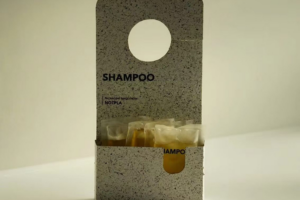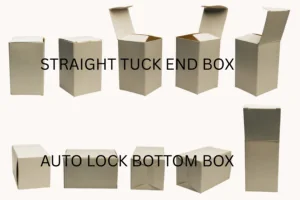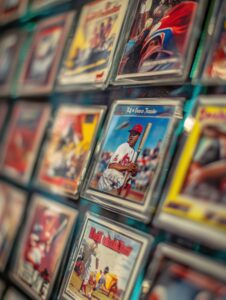Today, packaging transcends mere product protection to become a strategic tool for shaping customer perception, conveying brand value, and reinforcing brand identity. In fiercely competitive global markets, companies increasingly leverage sustainable packaging materials, premium printing techniques, and brand storytelling design to create packaging that not only looks stunning but also resonates deeply with consumers.
This article delves into how these three elements form the core equation determining the success of modern packaging.Provide you with the best eco-friendly packaging solutions
1. Sustainable Packaging Materials: The Cornerstone of Modern Packaging
Consumer environmental awareness has reached unprecedented heights, and brands failing to adapt risk obsolescence. Choosing sustainable packaging materials is no longer optional—it is an inevitable trend.
Recyclable Cardboard and Kraft Paper: Lightweight, durable, and widely recyclable, offering a cost-effective solution.
Biodegradable Plastics & Alternatives: Ideal for brands seeking eco-friendly substitutes for traditional plastics.
FSC-Certified Materials: Assures consumers paper originates from responsibly managed forests.
Companies adopting sustainable materials demonstrate environmental stewardship while earning the loyalty of eco-conscious consumers.
Sustainable packaging design and printing can focus on these aspects:
1️⃣ **Eco-Friendly Materials: Protecting the Planet at the Source**
Sustainable packaging uses renewable, biodegradable, or recyclable materials! For instance, paper packaging comes from sustainably managed forests, while bioplastics break down through microbial action, leaving zero environmental footprint.
2️⃣ **Lightweight Design: Less is More**
Packaging gets lighter without sacrificing functionality! By reducing material usage and optimizing structure, it conserves resources and lowers carbon emissions during transport.
3️⃣ **Recyclability: Giving Packaging a Second Life**
Sustainable packaging is designed with recycling in mind! Using single materials or easily separable components facilitates recycling and reuse♻️.
4️⃣ **Reusability: Saying No to Single-Use Waste**
Glass bottles and metal cans can be reused! Some brands even offer “packaging return programs”—return used items for reuse, ultra-eco-friendly!
5️⃣ **Non-Toxic & Safe: Health and Peace of Mind**
Sustainable packaging rejects toxic chemicals! Examples include BPA-free plastics and plant-based inks—use them with confidence.
6️⃣ **Innovative Design: Tech-Forward**
Smart packaging, edible packaging… Have you seen these cutting-edge innovations? Take seaweed-based films, for instance—they’re edible, leaving zero waste. Super cool!

2. Premium Printing: Elevating the Unboxing Experience
Packaging print quality determines whether a product feels ordinary or luxurious. Advanced printing techniques transform packaging into an extension of brand identity.
Offset printing delivers precision: Sharp details and accurate colors showcase professional quality.
Hot foil stamping and embossing: Add elegant texture and a premium tactile experience.
Spot UV and matte coatings: Highlight logos, patterns, or special elements through contrast effects.
Premium printing not only elevates visual appeal but creates unforgettable unboxing moments, inspiring customers to share on social media.
3. Brand Storytelling: Packaging as Storytelling Medium
Packaging is often consumers’ first encounter with a brand—let it tell your story. Through design elements, typography, and color, packaging conveys core values and mission.
Minimalist Design for Sustainability: Communicate environmental responsibility.
Vibrant Colors & Illustrations: Capture attention on crowded shelves.
QR Codes & Interactive Elements: Guide customers to explore the brand’s online story or eco-commitments.
Crafted storytelling elevates ordinary packaging into a marketing powerhouse, forging emotional connections with consumers.
Conclusion: Solving the Packaging Equation: Sustainability is Key

At Bonroy Printing, we are actively expanding our sustainable practices by transforming recycled coffee grounds into innovative paper materials. Finely ground coffee residue is crafted into paper with a natural coffee-brown tone, unique irregular patterns, and rich organic textures. Tiny, visible coffee particles remain on the surface, creating a distinctive visual character while offering a comfortable tactile experience. Each sheet embodies the raw beauty of nature and brings an eco-inspired aesthetic to paper products.
Functional Advantages:
This coffee ground paper is not only beautiful but also highly durable. It features excellent fold and abrasion resistance, superior stiffness, and is compatible with a wide range of finishing techniques, including foil stamping, embossing, debossing, die-cutting, lamination, creasing, folding, and punching.
Applications:
Packaging: Ideal for coffee, tea, and gourmet food gift boxes, the paper highlights an eco-friendly philosophy and a natural style, elevating product value and consumer appeal. It is also widely used for paper shopping bags—practical, sustainable, and a strong enhancer of brand image.
Cultural & Creative Products: Perfect for notebook pages, hardcover book covers, inserts, endpapers, as well as calendars, invitations, hangtags, and other creative stationery. It blends innovation with sustainability, adding distinctive texture and style to cultural products.
This is not just paper—it is a tribute to nature, a rejection of waste, and a refined expression of life’s aesthetics.


The future of packaging lies at the intersection of sustainability, premium printing techniques, and authentic storytelling. When these three elements synergize, packaging transforms from a basic necessity into an asset that drives growth, loyalty, and brand recognition.
Bonroy specializes in providing eco-friendly materials, advanced printing technologies, and customized packaging solutions to bring your brand story to life on paper. Contact us today to discover how we can help you solve the packaging equation.



